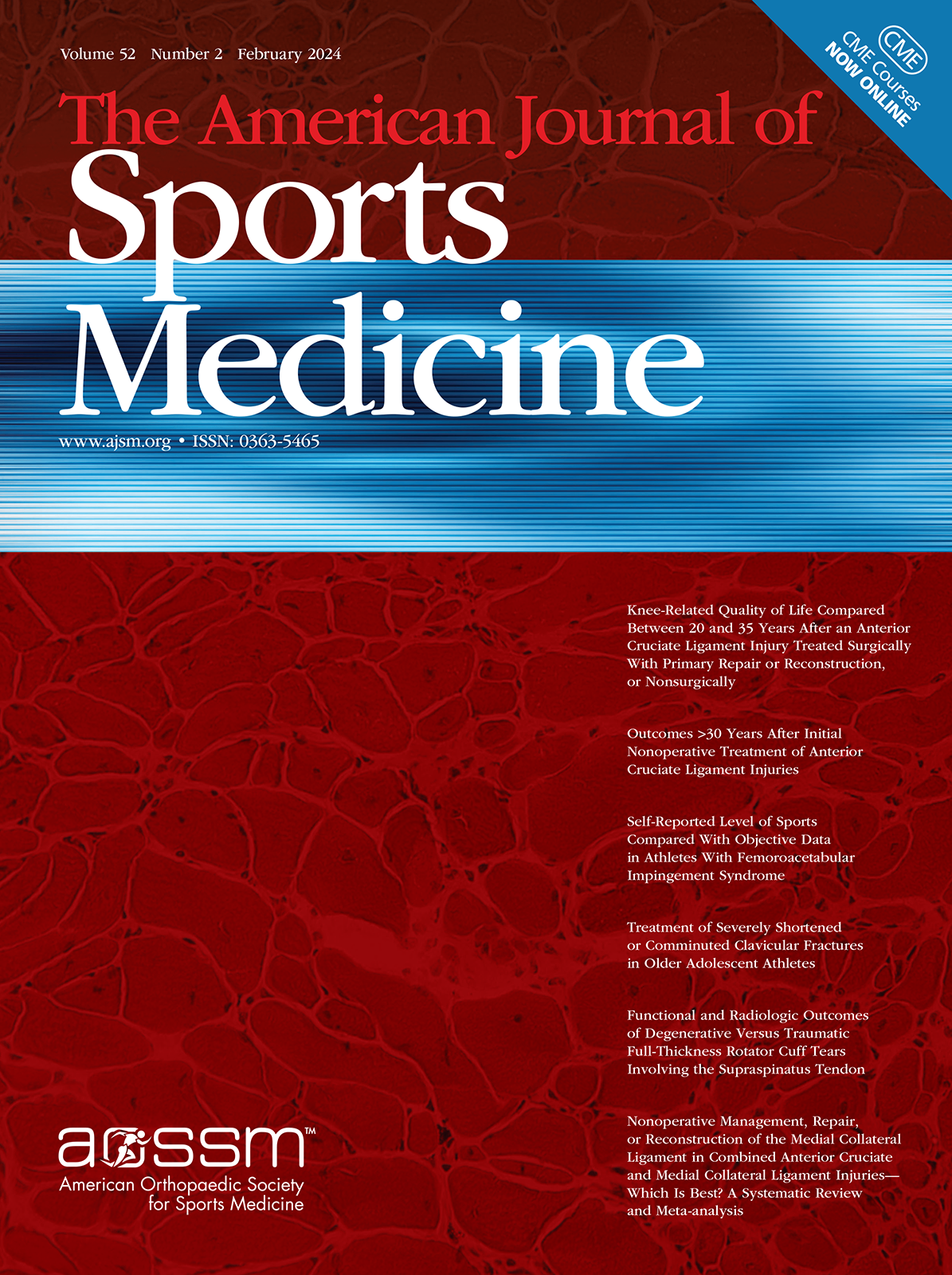
Repair of rotator cuff and SLAP lesions provides inferior results in patients over 50

Repair of rotator cuff and SLAP lesions provides inferior results in patients over 50
No advantages in repairing a type II superior labrum anterior and posterior (SLAP) lesion when associated with rotator cuff repair in patients over age 50: A randomized controlled trial
Am J Sports Med. 2008 Feb;36(2):247-53Synopsis
63 patients, over the age of 50, suffering from both rotator cuff injuries and type II SLAP lesions were randomized to undergo repair of both injuries or only the rotator cuff repair. Results, following a minimum follow-up of 2.9 years, indicated that patients who underwent repair of only the rotator cuff had significantly better UCLA scores and ROM.
Was the allocation sequence adequately generated?
Was allocation adequately concealed?
Blinding Treatment Providers: Was knowledge of the allocated interventions adequately prevented?
Blinding Outcome Assessors: Was knowledge of the allocated interventions adequately prevented?
Blinding Patients: Was knowledge of the allocated interventions adequately prevented?
Was loss to follow-up (missing outcome data) infrequent?
Are reports of the study free of suggestion of selective outcome reporting?
Were outcomes objective, patient-important and assessed in a manner to limit bias (ie. duplicate assessors, Independent assessors)?
Was the sample size sufficiently large to assure a balance of prognosis and sufficiently large number of outcome events?
Was investigator expertise/experience with both treatment and control techniques likely the same (ie.were criteria for surgeon participation/expertise provided)?
Yes = 1
Uncertain = 0.5
Not Relevant = 0
No = 0
The Reporting Criteria Assessment evaluates the transparency with which authors report the methodological and trial characteristics of the trial within the publication. The assessment is divided into five categories which are presented below.
3/4
Randomization
3/4
Outcome Measurements
4/4
Inclusion / Exclusion
4/4
Therapy Description
3/4
Statistics
Detsky AS, Naylor CD, O'Rourke K, McGeer AJ, L'Abbé KA. J Clin Epidemiol. 1992;45:255-65
The Fragility Index is a tool that aids in the interpretation of significant findings, providing a measure of strength for a result. The Fragility Index represents the number of consecutive events that need to be added to a dichotomous outcome to make the finding no longer significant. A small number represents a weaker finding and a large number represents a stronger finding.
Why was this study needed now?
There is a lack of quality research in the literature examining the results of type II SLAP lesion and rotator cuff repair in comparison to just rotator cuff repair, in patients suffering from both injuries. The only studies examining these differing repair methods were conducted in a youthful population, making it a necessity to assess these methods in an older population through this study.
What was the principal research question?
Is there a difference in clinical outcomes when comparing the repair of either rotator cuff and SLAP lesions or the repair of rotator cuff tears without the repair of the slap lesion in patients over the age of 50?
What were the important findings?
- None of the study subjects experienced infection or neurologic/vascular complications.
- Mean operative time was 90 SD 22.5 minutes in group 1 and 60 SD 16.4 minutes in group 2.
- In Group 1 (SLAP repair and rotator cuff repair), the UCLA score significantly improved from preoperative average rating of 10.4 (range, 6-14) to an average of 27.9 (range, 24-35), postoperatively (P < .001).
- In group 2 (biceps tenotomy and rotator cuff repair), the UCLA significantly improved from a preoperative average rating of 10.1 (range, 5-14) to an average of 32.1 (range, 30-35), postoperatively (P <.001)
- No statistically significant differences were found in total postoperative UCLA scores and range of motion in 2 groups postoperatively (P < .05).
What should I remember most?
There were no advantages to repairing Type II SLAP lesions while repairing rotator cuff injuries compared to repairing rotator cuff on its own, in patients over the age of 50, as both had similar significant improved UCLA scores and ROM.
How will this affect the care of my patients?
Patients over the age of 50 presenting with rotator cuff tears and SLAP lesions should only undergo repair of the rotator cuff tear for optimal functional outcomes. Other studies to improve the surgical procedures should be undertaken.
Learn about our AI Driven
High Impact Search Feature
Our AI driven High Impact metric calculates the impact an article will have by considering both the publishing journal and the content of the article itself. Built using the latest advances in natural language processing, OE High Impact predicts an article’s future number of citations better than impact factor alone.
Continue



 LOGIN
LOGIN

Join the Conversation
Please Login or Join to leave comments.